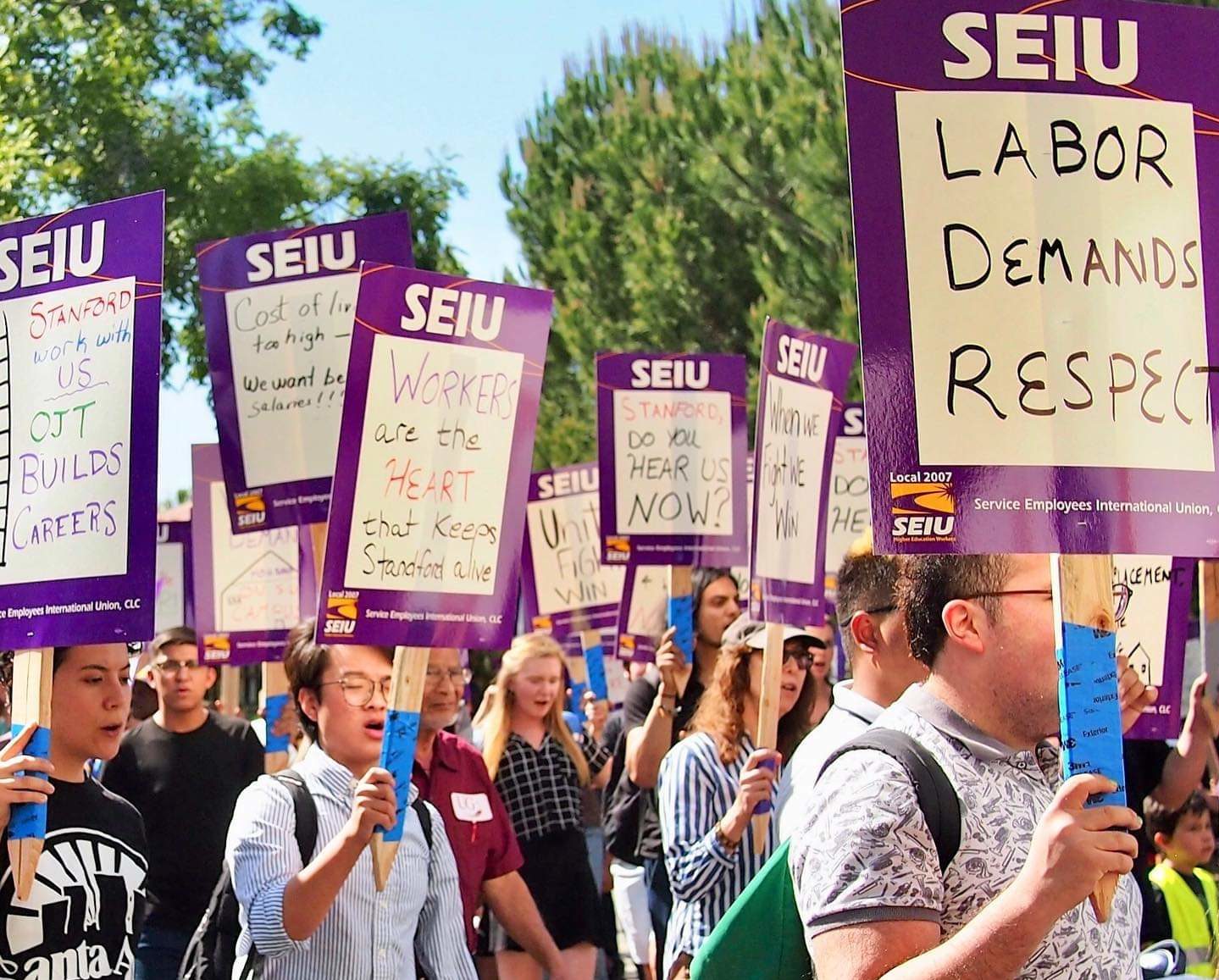Service Employees International Union Higher Education Workers Local 2007 (SEIU) ratified a new bargaining agreement with the University on Sept. 6 after four months of negotiations.
The four-year contract secured wage increases for several groups of workers represented by SEIU, expanded insurance coverage by the University and increased sick leave allowances, among other changes. Prior to the contract’s ratification, the two parties reached a tentative agreement on the contract on Sept. 1, just days after union workers voted to authorize a strike.
SEIU represents 1,390 Stanford employees working in food service and as custodians, maintenance workers, groundskeepers, life science technicians and accelerator technologists, according to the Stanford Report.
Negotiations between the University and SEIU began with the exchange of written proposals from both entities. At the conclusion of the negotiations, a tentative agreement was reached and was incorporated into the written collective bargaining agreement following ratification by union members and approval by the University.
SEIU’s goals for the negotiations included wage increases for workers, improvements in health benefits and “realignment,” said SEIU president and co-chief negotiator Paul Regalado. Total realignment, or the process of proportionally increasing the pay of each wage classification represented in the union, was one of the SEIU bargaining team’s primary prerogatives and was a proposal that was not accepted by the University.
“Our goal was to realign all classifications, but the University disagreed,” Regalado said. “That was disappointing. We were successful in realigning three series, or six total classifications, but we were hoping for more.”
The University’s initial proposal included lower-than-expected wage increases and cutbacks on medical benefits for workers, he said, prompting SEIU members to express dissatisfaction jointly with the Stanford Graduate Workers’ Union (SGWU), which today remains in negotiations with the University.
This dissatisfaction led the SEIU to authorize a strike on Aug. 22, according to co-chief negotiator and retired Stanford employee Richard Patrone. Following the SEIU’s strike, the University began to revise its proposals and reach an agreement that was more aligned with the union’s demands.
“I believe that the possibility of a strike, since the membership overwhelmingly voted to do so, forced the University to negotiate,” said Patrone. “Stanford is cheap, and they don’t want to let go of any part of their endowment. That’s always been a problem.”
Regalado and his colleagues on the SEIU bargaining team were also satisfied with the course of the negotiations following the strike measure, he said. In an interview with The Daily on Aug. 1, University President Jonathan Levin said that he hoped to “reach an agreement quite soon” with the SEIU, characterizing the negotiations as “constructive.”
“Stanford deeply values the employees represented by SEIU Local 2007 and the work they do in supporting the University, as well as the productive relationship we have with the union,” wrote Dee Mostofi, assistant vice president of university external communications. “We appreciate that we were able to achieve a new contract with SEIU Local 2007 by working together toward a resolution that meets the mutual interests of both the University and the union.”
However, Patrone said there is work still to be done to secure more affordable employee health benefits. SEIU and the University will meet again in December to discuss revisions to the employee health plan.
“Retirement health care for retirees is enormously expensive,” he said, “not just for our union, but for all the other staff that are not in the union, and all of those people will be affected by this when they retire from Stanford.”
“The fight will always continue for workers’ rights, better healthcare, and quality of life for our membership,” Regalado said.
Correction: A previous version of the article misstated the strike measure as a strike. The Daily regrets this error.
